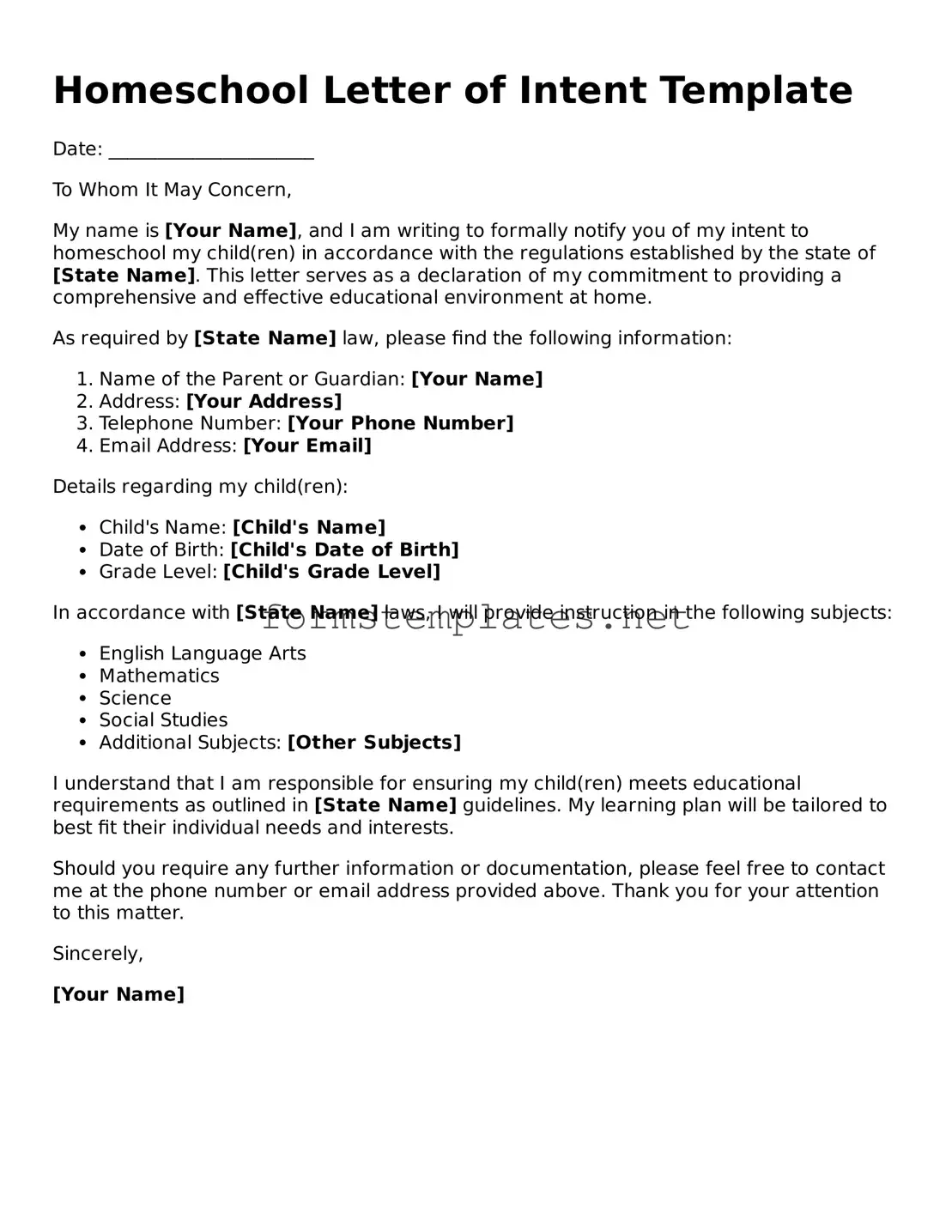Homeschool Letter of Intent Template
Date: ______________________
To Whom It May Concern,
My name is [Your Name], and I am writing to formally notify you of my intent to homeschool my child(ren) in accordance with the regulations established by the state of [State Name]. This letter serves as a declaration of my commitment to providing a comprehensive and effective educational environment at home.
As required by [State Name] law, please find the following information:
- Name of the Parent or Guardian: [Your Name]
- Address: [Your Address]
- Telephone Number: [Your Phone Number]
- Email Address: [Your Email]
Details regarding my child(ren):
- Child's Name: [Child's Name]
- Date of Birth: [Child's Date of Birth]
- Grade Level: [Child's Grade Level]
In accordance with [State Name] laws, I will provide instruction in the following subjects:
- English Language Arts
- Mathematics
- Science
- Social Studies
- Additional Subjects: [Other Subjects]
I understand that I am responsible for ensuring my child(ren) meets educational requirements as outlined in [State Name] guidelines. My learning plan will be tailored to best fit their individual needs and interests.
Should you require any further information or documentation, please feel free to contact me at the phone number or email address provided above. Thank you for your attention to this matter.
Sincerely,
[Your Name]
